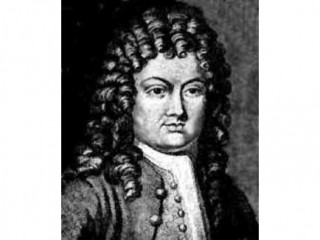
Brook Taylor biography
Date of birth : 1685-08-18
Date of death : 1731-12-29
Birthplace : Edmonton, England
Nationality : British
Category : Science and Technology
Last modified : 2011-01-22
Credited as : Mathematician, Taylor series,
The English mathematician Brook Taylor is best known for the Taylor series and contributions to the theory of finite differences.
Brook Taylor was born at Edmonton on Aug. 18, 1685, the eldest son of John and Olivia Taylor. After instruction at home in classics and mathematics he entered St. John's College, Cambridge, where he graduated in law in 1709, receiving the doctorate in 1714. Two years earlier he was elected a fellow of the Royal Society; he served as first secretary from 1714 to 1718 and contributed several papers to the Philosophical Transactions. Taylor's first marriage, in 1721, ended when his wife died in childbirth. In 1725 he married again and 4 years later inherited his father's estate in Kent. The death of his second wife the following year in giving birth to his daughter, Elizabeth, affected him deeply. He died on Dec. 29, 1731, in London.
The famous Taylor series was printed for the first time in the Methodus incrementorum directa et inversa (1715), although there is evidence that Gottfried Wilhelm Leibniz and Isaac Newton had known the result earlier. The series expresses the value of a function in the neighborhood of a point in terms of the derivatives at the point. Taylor derived the series by taking the limiting case of the general finite difference formula, but he failed to consider the problem of convergence. He specifically mentioned the case x = 0, which is often known as Maclaurin's series. Joseph Louis Lagrange was the first to recognize fully the importance of the Taylor series, and the first correct proof was given by Augustin Louis Cauchy.
Taylor's book was the first treatise on the method of finite differences. Although finite differences were widely used in interpolation in the 17th century, it was Taylor who developed the method into a new branch of mathematics, notably by applying it to the determination of the frequency and form of a vibrating string.
In 1717 Taylor applied his series to the solution of numerical equations, observing that the method could be used to solve transcendental equations. Other contributions to the calculus included consideration of change of variable, the first singular solution of a differential equation, and the derivation of the differential equation relating to atmospheric refraction. He also contributed a solution to the problem of the center of oscillation.
In 1715 Taylor published his Linear Perspective, followed in 1719 by New Principles of Linear Perspective. These works contained the first general statement of the principle of vanishing points. In his later years he became interested in philosophy, writing Contemplatio philosophica, which was printed and circulated privately in 1793.
A good biography, written by Taylor's grandson, William Young, is prefixed to Taylor's Contemplatio philosophica (1793). On
the Taylor series and finite differences see the chapter on data analysis in Cornelius Lanczos, Applied Analysis (1957).
















